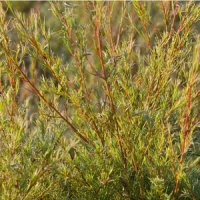For those still using Tea Tree Oil neat:
Re: Review of Contact Dermatitis Associated with Tea Tree Oil Exposure
de
Groot AC, Schmidt E. Tea tree oil: contact allergy and chemical composition. Contact Dermatitis. 2016;75(3):129-143.
Tea
tree (Melaleuca alternifolia,
Myrtaceae) essential oil prepared from the leaves or terminal branchlets
(branch tips) of the tea tree has antimicrobial, anti-inflammatory, antitumoral,
and analgesic properties. Therefore, it is used for treating common skin
diseases like acne and eczema, skin infections such as herpes simplex and
warts, wounds, burns, insect bites, dandruff, and nail mycoses.
Tea tree oil
(TTO) is a common ingredient in a wide range of topical medications, cosmetics,
and household products. Of all essential oils, TTO has caused the greatest number
(over 90 cases) of contact allergic reactions reported in the literature. This article
reviews the literature regarding the chemical composition of TTO and allergic
contact dermatitis reactions to TTO.
Over
220 constituents of TTO have been reported in more than 50 studies. The
composition of TTO
varies widely depending upon the chemotype, plant part used,
and method of distillation. Although six main chemotypes have been recognized,
almost all commercial products contain the terpinen-4-ol dominant (type 1)
chemotype. The other major constituents of
commercial TTO are terpinolene, γ-terpinene, 1,8-cineole, α-terpinene, α-terpineol,
p-cymene, and α-pinene.
 | ||
| Tea Tree awaiting harvest |
Exposure
to oxygen, light, heat, and humidity changes the composition of TTO over time.
The antioxidants α-terpinene, γ-terpinene, and terpinolene
are oxidized to p-cymene; the level
of antioxidants decreases and p-cymene
level increases up to ten-fold; and the formation of peroxides, endoperoxides,
and epoxides such as ascaridole occurs. With aging, TTO becomes green-brownish
in color, the aroma becomes turpentine-like, and the viscosity changes.
Prolonged oxidation and aging leads to crystallization of compounds and
formation of long, thin needle-like crystals.
TTO
is responsible for causing contact allergy and allergic contact dermatitis. In
routine skin patch testing with 5% TTO, the incidence of positive reactions ranged
from 0.1% to 3.5% of the population. The highest rates were observed in
Australian studies. The relevance to previous exposure to TTO ranged from
20-66% in these studies.
Approximately two-thirds
of the case reports were related to the application of pure TTO for treatment
of various skin diseases. In some of the reported cases, the allergic reactions
were caused by application of topical formulation containing TTO, and six cases
were due to occupational exposure to high concentrations of TTO. Studies of the
sensitizing potential of TTO have shown that the fresh oil is a weak to
moderate sensitizer, but oxidation significantly increases its sensitizing
potential. The most frequently reported sensitizers are ascaridole, terpinolene, α-terpinene (and its oxidation products),
1,2,4-trihydroxymenthane, α-phellandrene, and limonene. Other constituents
which may contribute to sensitivity include myrcene, aromadendrene, d-carvone,
l-carvone, terpinen-4-ol,
viridiflorene, and more rarely (<5%),
sabinene, 1,8-cineole, and p-cymene. "Most positive patch test reactions to TTO … probably result
from sensitization to the oil itself. However, in some cases, they may possibly
reflect prior sensitization to an ingredient of the oil."
In addition, co-reactivity
to oil of turpentine, as well as fragrance mix I, benzoin (Styrax benzoin,
Styracaceae) resin, balsam of Peru (Myroxylon balsamum var. pereirae, Fabaceae) resin,
colophonium, and other essential oils has been reported.
—Blake Ebersole(still want to use Tea Tree Oil neat? I hope not!)


No comments:
Post a Comment